The fine folks over at HP flew me and a bunch of other journalists from all over the world out to Los Angeles, CA last week to get a sneak peek at some tech goodies I can't talk about just yet. Part of the fun was a tour of the facilities of DreamWorks Animation SKG which was crowned with a screening of "Monsters vs. Aliens" the day before it was released. While the movies has already been commented upon by the folks who get paid to do that sort of thing, I am going to add my own $0.02 to the pot. Being familiar with the software and techniques used to produce such a film, MVA stands out not only for it's use of 3D (which was used quite well to give the scenes depth and realism, not just for sight gags), it also builds upon all of the techniques and technologies used in films prior to it. Working our way through our group of stalwart monsters, I would like to point out what was special about him/her/it: Susan Murphy/Ginormica - Susan's model displays some truly amazing texture maps: realistic skin tones including freckles/blemishes; her "prison uniform" had a visible denim weave to it; and her hair simulation is the best I've seen since "Final Fantasy: Spirits Within". B.O.B - the most computationally challenging character, B.O.B.'s amorphous, translucent body would not have been possible a few years ago. Only recent advances in desktop compute power (more on this later today) enabled DreamWorks animators to be able to render B.O.B in a reasonable timeframe. Missing Link - Link's skin exhibited some extremely complex texturing including specular highlights as the skin glistened while moist. Dr. Cockroach, Ph.D. - Dr. C's carapace, while not as heavily textured as Link's or as detailed as Susan's did exhibit a slight level of reflectivity that was directly influenced by his environment. From certain angles, you can see stuff reflected in his skin. Insect-a-saurus/Butterfly-a-saurus - Possibly the most massive hair simulation in the history of Hollywood, the Mothra-class bug was visible down to individual follicles and caustic deformations on his claws. Stunning. Will this film win "Best Picture"? Not likely. Will the kids love it? You bet. Will you be able to stand it? Yup. DreamWorks has managed to channel the comedic spirit of Warner Bros. old "Termite Terrace" animation group from the 30's-40's with two currents of humor in the film: slapstick fun for the kids and double-entendre/innuendo jokes for the parents. Good fun for all. For those who haven't seen the film - Derek is a jerk.
Monday, March 30, 2009
Friday, March 6, 2009
An Afternoon with Hasselblad & DTG
After reading my previous blog entry “A Morning with Capture Integration”, the folks at Digital Technology Group (DTG) invited me to their suite at the Graphics of the Americas expo held in Miami Beach for some “hands-on” time with the Hasselblad H-System.
DTG is based out of Tampa, FL and is the local Hasselblad (and Alpa) dealer (among many other things) here in Florida. That is saying a lot. Florida is the 4th largest state in the USA and Miami-Dade County is twice the size of the state of Rhode Island all by itself. It’s a big area to cover and I appreciate their inviting me over.
I have previously spoken about the Hasselblad H-System, but this was my first “hands-on” session that wasn’t rushed by a crowd of slavering photogs hoping to get a chance to fondle $30K worth of camera. Just me (and Jordan Miller from DTG and Greg Hollmann and Gina Connor from Hasselblad USA) and the H-System for two hours.
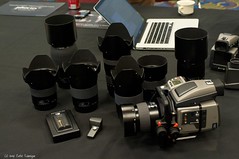

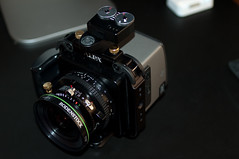
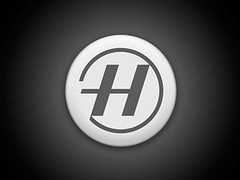
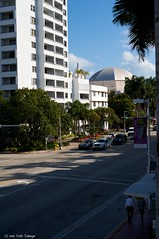 | 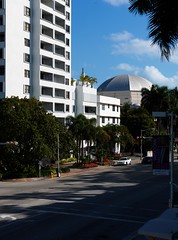 |
These two tiny jpegs (Hasselblad on the right, Nikon on the left) do not do either of these cameras justice. To truly appreciate the images one must see them in full size. Here are links to the full-sized images: Nikon image Hasselblad image Remember, these are 24-bit jpegs (8-bits per channel) and as such have lost a lot of the color information captured by both cameras. The Nikon normally captures 12-bits/channel and can be pushed to 14-bits. As mentioned before, the Hasselblad captures at 16-bits/channel. And just in case you are thinking that 2-4 bits difference is no big deal, every bit doubles the number of colors captured by the sensor. Hasselblad employs a central leaf shutter system which gives the H-System flash compatibility at all shutter speeds with the drawback that the system is limited to a max shutter speed of 1/800s which is not a big deal in the studio, but may require use of neutral density filters if used wide open for landscapes. This is not a sports camera. Conclusion The Hasselblad H-System is a solid piece of engineering. Well-balanced and built like a tank, it provides the photographer (who can afford it) a truly spectacular tool for capturing images. Hasselblad’s system approach is a love/hate kind of thing. If you love that kind environment, then this is the camera for you. If you’ve got a bit of William Wallace in you, you may want to look at a more flexible system. I am not saying that the H-System is limiting in any way. There are plenty of choices and third party gear that can be used with the H-System, just not as many as everybody else. The files produced by the H-System contain a staggering amount of image information and detail. So much so that portrait work may require A) a softening of the subject in order to hide skin imperfections or B) the hiring of a really, really good makeup artist (probably both.) If you like the way Apple Inc. builds computers, you’ll fall for the Hasselblad approach. I know I want one.
Posted by
Carlos Echenique
at
1:13 AM
View Comments
![]()
![]()
Labels: Alpa, D700, DTG, hasselblad, medium format






